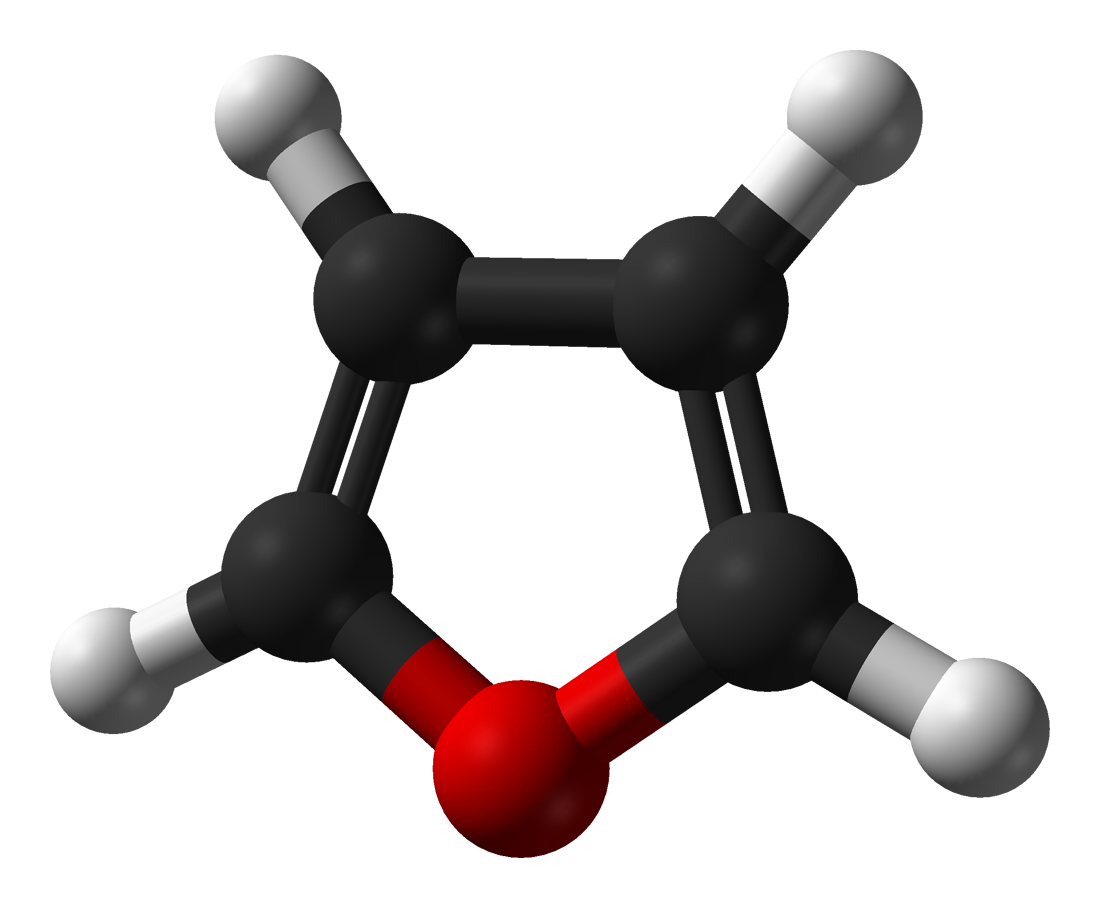In a world first, scientists have successfully developed single-atom editing technology that can be used to maximize drug efficacy. The “dream” technology enables researchers to tweak individual atoms quickly and easily, and should help to enhance drug discovery.
The breakthrough comes from a team at the Korea Advanced Institute of Science and Technology (KAIST), who figured out a way to convert an oxygen atom in a furan compound – an organic compound with a five-membered ring that contains four carbon atoms and one oxygen atom – into a nitrogen atom. The resulting molecule is a pyrrole, which is widely used in pharmaceuticals.
The furan compound, C4H4O. The molecule has a five-membered ring containing four carbon atoms (black) and one oxygen atom (red). The white denotes hydrogen atoms.
The properties of a drug depend on the arrangement of its constituent atoms – change just one of these atoms, and you could change the efficacy of the drug itself. This has become known as the “Single Atom Effect”. Achieving it, however, is not easy. Typically, attempts involve multi-step, costly synthesis processes, and require harsh conditions – all of which is far from optimal.
The team from KAIST, led by Professor Yoonsu Park, has overcome these usual challenges by using the energy from light to swap an oxygen atom for nitrogen.
“This offers a powerful capability that could streamline chemical synthesis, transform complex molecules, and advance drug discovery,” write Ellie F. Plachinski and Tehshik P. Yoon, who were not involved in the research, in a Perspective accompanying the study.
Park and colleagues developed a photocatalyst – a molecule that accelerates a reaction upon exposure to light – which acts as a “molecular scissor” to snip five-membered rings, thus allowing single-atom editing at room temperature and atmospheric pressure. It is the first time that this has ever been achieved.
Applying the technology to a furan compound, the team was able to remove an oxygen atom via single-electron oxidation and then exchange it for a nitrogen atom under mild conditions.
The approach, Plachinski and Yoon write, is an “exceptional example of a molecular editing reaction” and can be applied to a variety of natural products and pharmaceuticals that contain furan compounds.
“This breakthrough, which allows for the selective editing of five-membered organic ring structures, will open new doors for building libraries of drug candidates, a key challenge in pharmaceuticals,” said Park in a statement. “I hope this foundational technology will be used to revolutionize the drug development process.”
The study is published in the journal Science.
Source Link: World’s First "Atomic Editing" Technology Could Revolutionize Drug Discovery
